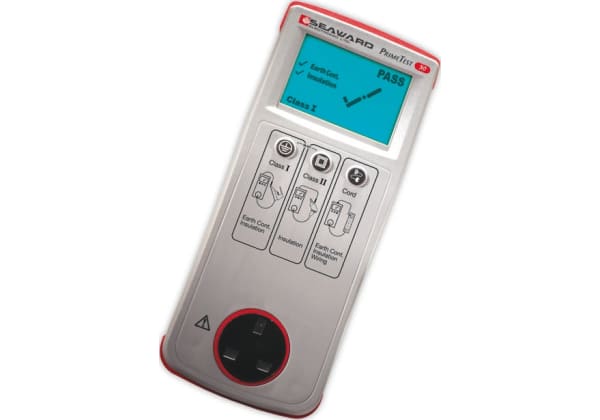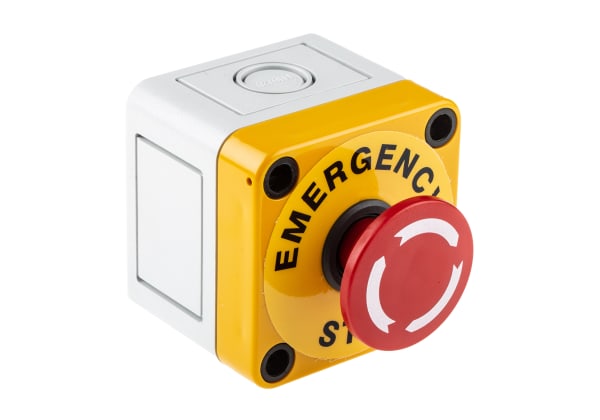- Published 14 Oct 2024
- Last Modified 14 Oct 2024
- 7 min
A Guide to ESD Testing
Electrostatic discharge (ESD) testing helps protect electronic equipment and its users. Learn more about ESD testing equipment, methods, and standards, along with how ESD works and how important avoiding it is for safety.
Electrostatic discharge (ESD) takes many forms in our lives: from mild shocks on metal door handles, to lightning strikes, to imperceptible but serious current discharges through equipment. Electronic equipment can experience serious damage from ESD due to the excess energy flow. That, coupled with ESD’s safety hazards, makes ESD precautions vital for business operations.
This guide will explain ESD’s causes and emphasise the serious ESD meaning for workplace safety, including how to avoid electrostatic discharge in your business operations.
What is ESD Testing?
What does ESD stand for? Electrostatic discharge: a sudden, brief electric current between unequally charged objects.
And what is ESD testing? Electrostatic discharge testing is a means of determining how susceptible equipment is to ESD, and thus what potential it has for suffering damage from ESD or discharging onto ESD-sensitive equipment.
Electrostatic Discharge
So just what is electrostatic discharge (ESD)? It is an instantaneous flow of electric current between two objects of unequal charge, that is, one object carrying excess electrons and another able to take them on.
ESD can occur when the objects contact, are brought close to each other, or when an insulating material between them experiences dielectric breakdown: the insulator experiencing more voltage than it can withstand, briefly turning it into a conductor. ESD can produce a visible spark, though its more significant effect is the electrical energy it transfers, which can damage delicate electronics.
You’re likely familiar with electrostatic discharge in both its small forms (like zapping yourself on a light switch after walking across a carpet) and its most extreme form (lightning). Rubbing objects together, like socks and carpet, can transfer charge between them (tribocharging), and then this static electricity can discharge into a conducting object upon contact. In the case of lightning, an electric potential of hundreds of millions of volts between a cloud and the ground produces a massive, visible, audible, and destructive electrostatic discharge.
Visible finger zaps around the house aren’t as small as ESD gets, though. Tiny electrostatic discharge can be imperceptible to us but still damaging to equipment: unless it has ESD protection.
Importance of ESD Testing
What does ESD mean for workplace safety? In our high-tech world’s reliance on electronic equipment for so many things, their ESD protection is serious business. ESD precautions are also essential for environments that must avoid all forms of sparks.
Where ESD Happens
Electrostatic discharge (ESD) is caused by which three sources?
ESD-sensitive devices experience electrostatic discharge in the following three ways, all of which ESD testing seeks to prevent:
- Discharge from another device: When an external object, including a person, accumulates a charge and then contacts an ESD-sensitive device. This is known as the human body model (HBM).
- Discharge to another device: When the ESD-sensitive device itself builds up a charge due to its operations, handling, or contact with other objects, and then discharges to an object of lower electrostatic potential. This is also called the charged device model (CDM) or machine model (MM).
- Induction: Charged objects (which emanate an electrostatic field) brought into proximity with an ungrounded ESD-sensitive device can make the device’s electrons redistribute at the surfaces near the charged object, giving it a charge imbalance (all without contacting the charged object). An ESD can then occur when the device contacts some other object: one that can conduct this charge. This is the field-induced charged board model (FCBM).
ESD testing procedures need to consider devices’ potential to experience electrostatic discharge in all three of these modes. People working in electronics production or cleanrooms need to take careful ESD precautions against these modes to prevent ruining their work.
ESD Hazards
ESD precautions like ESD testing seek to avoid the following types of incidents, some of which can be catastrophic:
- Damage to electronic equipment: If electrostatic discharge fries your electronics, this means replacement and service costs.
- Failed automated equipment: Any equipment dependent on control signals from ESD-sensitive devices will fail to operate if electrostatic discharge cripples those devices. This can mean lights, alarms, doors, ventilation, robotic equipment, and telecommunications operating incorrectly or not operating when they’re needed. That leads to inconvenience, crippled business operations, or serious safety concerns.
- Explosions: If electrostatic discharge sparks occur in atmospheres rich in natural gas, gasoline vapour, or coal dust, the spark can ignite this fuel and produce disastrous explosions.
Electrostatic discharge prevention thus plays a serious role in workplace safety.
However, the ESD’s shock itself is not typically a safety hazard for people (unless you include lightning). Even with shocks from contacting industrial equipment, the voltage producing the shock may be high, but it can’t sustain current long enough to harm you. Electronic equipment is much more sensitive to ESD than humans are.
How ESD Testing Works
ESD testing methods involve specialised ESD testing equipment, equipment for preventing static electricity build-up, and carefully controlled ESD testing procedures.
ESD Testing Equipment
RS carries ESD testers in three main categories:
- Test Meters: Units for testing functionality of ESD-protective wrist straps and footwear or checking resistivity of surfaces meant to prevent static electricity build-up (ESD floor testing).
- Continuous Monitors: Instruments that always monitor ESD integrity in surfaces and workwear with ESD protection. This avoids doing ongoing test sessions.
- Testers and Auditors: Units for calibrating ESD test meters.
RS carries other equipment with ESD protection, which further helps you create a safe ESD testing setup that will produce accurate results without building up static electricity:
- ESD grounding equipment: Wires and bonding plugs that ground equipment and specialise in also providing ESD protection.
- ESD-safe mats: These can be laid on flooring or workbenches to create anti-static zones and ensure everyone and everything inside the zone is at the same electric potential.
- ESD grounding wrist straps: These tether the wearer’s hand to a ground point with a cable, further ensuring you can perform ESD testing without building up charge on your person.
- ESD-safe anti-static shoes: Footwear designed to prevent static electricity build-up as you walk around.
- ESD-safe anti-static gloves: Hand protection designed to prevent static discharge when handling electronic components.
ESD Testing Procedures
RS ESD testing equipment focuses on verifying functionality of equipment and surfaces meant to deter static electricity build-up (rather than testing ESD-sensitive equipment itself). These devices generally use the following ESD testing method:
- Ensure proper grounding of all equipment involved, including the test personnel.
- Connect the ESD testing equipment to the surface or device under test. (The style of the connection point varies from tester to tester.) This will test its resistivity, and the operator’s body will be included in the test circuit produced.
- Observe the ESD tester’s reaction. Most ESD testers sound an alarm or activate a red light if the resistance level is unsafe for electrostatic discharge prevention (or a green one for safe conditions).
- In the case of a failed test, stay away from ESD-sensitive devices until you’ve collected equipment that passes ESD tests. You can also do more refined tests to locate the failure point, such as testing just your footwear or wrist strap rather than both at once.
ESD Testing Standards
ESD testing standards include the following:
- IEC 61000-4-2: Electrostatic discharge immunity test
- IEC 61340-3-1: Methods for replicating ESD using the human body model
- IEC 61340-3-2: Methods for replicating ESD using the charged device model
- MIL-STD-461G CS118: Personnel-originated ESD
- RTCA/DO-160 Section 25: ESD testing for aircraft
- ISO 10605: Road vehicle ESD tests
ESD Testing Best Practices
To better ensure accurate ESD testing results and stay safe while doing so, include the following in your ESD testing procedures:
- Do not touch external metal devices since this will negatively affect test results.
- Regularly examine footwear and replace any with excessive wear.
- Ensure good skin conductivity by keeping it moisturised and doing some brisk walking before the test to build a sweat layer.
- Regularly calibrate equipment.
- Regularly clean test contact surfaces and follow the tester’s cleaning instructions.
- Only use ESD testing equipment on the items it’s designed to test.
Learn more about ESD precautions in our ESD protection guide.



